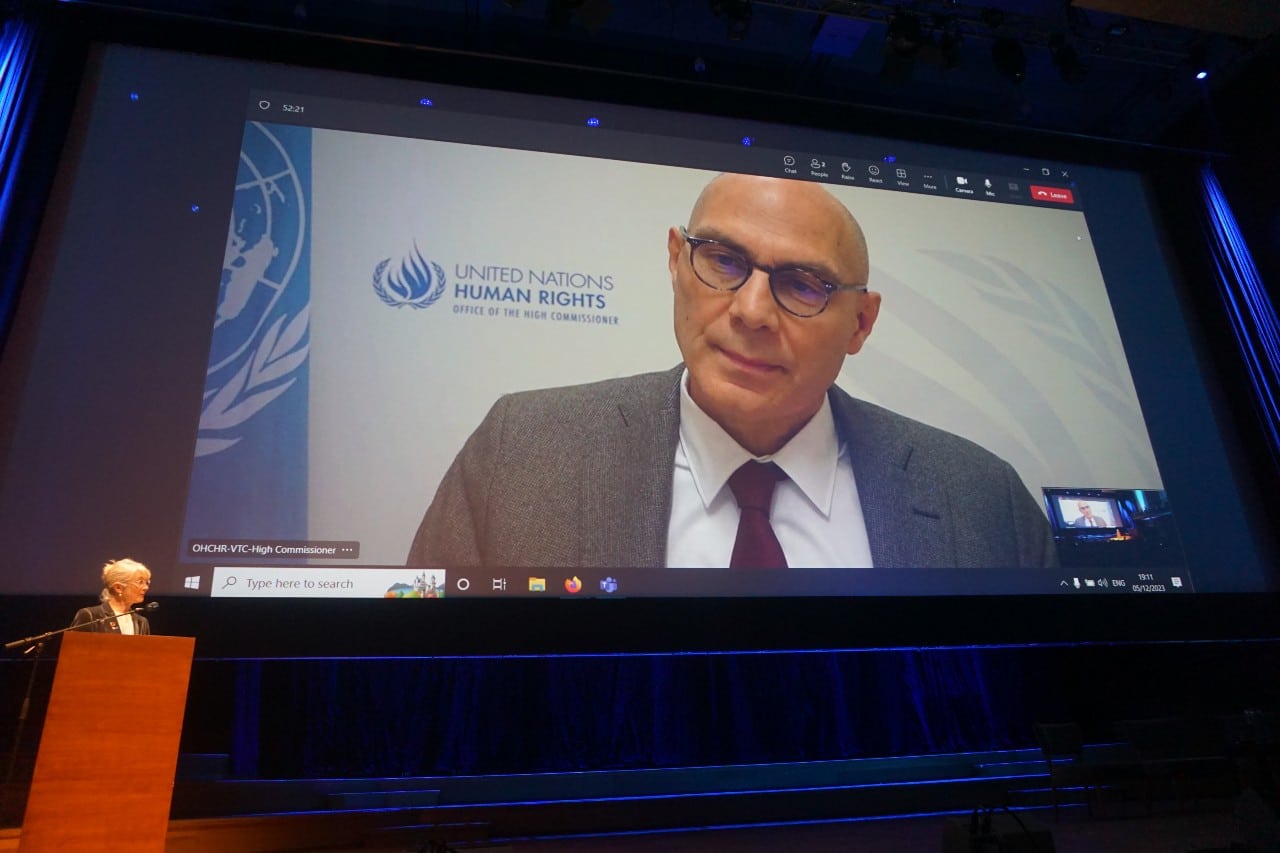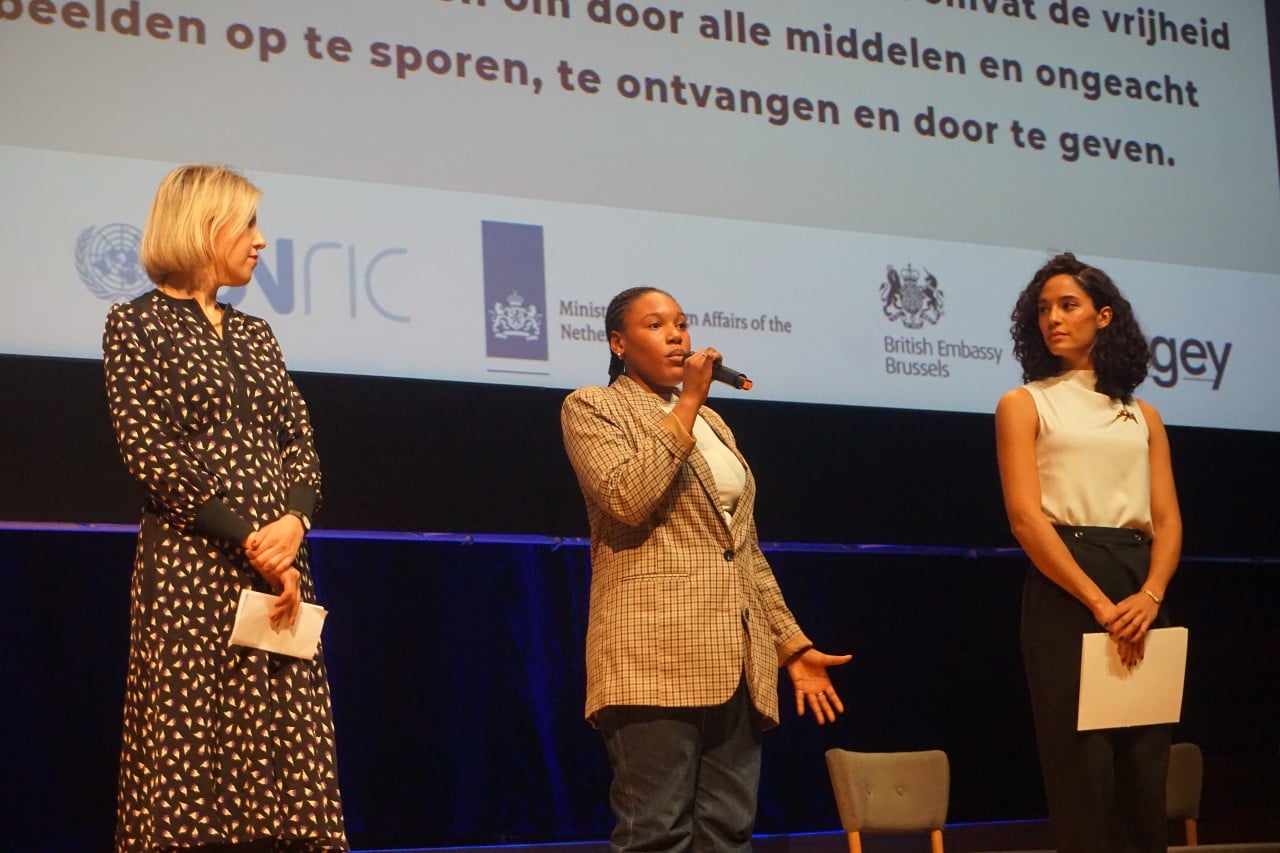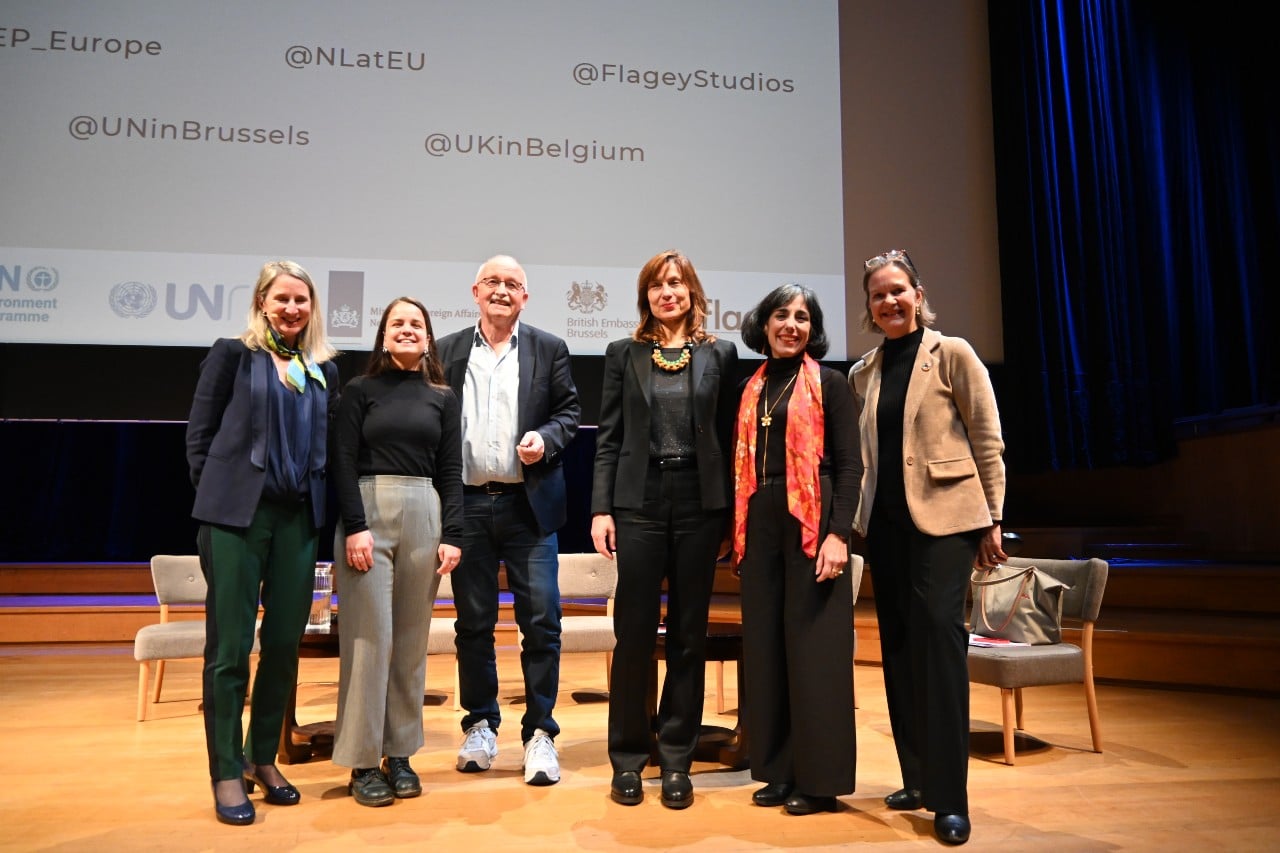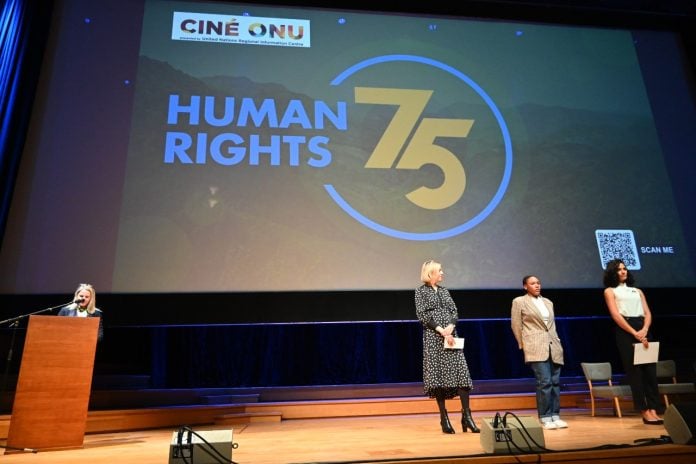To mark the 75th anniversary of the Universal Declaration of Human Rights, the United Nations (OHCHR, UNRIC, UNEP, UNESCO) in Brussels hosted the Belgian premiere of Dr. Jane Goodall’s documentary “Reasons for Hope” with the support of the British Embassy Brussels, the Embassy and Permanent Representation of the Kingdom of the Netherlands and Flagey. The event had a vibrant audience of up to 700 people, including many young people. The screening was held ahead of Human Rights Day (10 December) as part of Ciné-ONU, the popular programme that showcases films and encourages dialogue on important UN themes.
A film with a call to action
UN Messenger of Peace Jane Goodall’s film follows three grassroot environmental projects, from the United States to Austria with astonishing results offering a ray of hope and inspiring people to make a difference in the world around them. The documentary zeroes in on safeguarding the environment and biodiversity, exploring themes such as industrialisation, indigenous rights, and local initiatives, while also making a broader statement on universalism and the ownership of rights.

UN Human Rights Chief Volker Türk addressed the opening of the screening live from Geneva: “[The Universal Declaration of Human Rights] was drafted as a promise of hope, of justice, of dignity, and on the basis of fundamental values as a universal human rights regime that is meant to capture the imagination of people. It is meant to transform society, to put an end to injustice, inequalities and war.” He continued: “We need to bring an end to this endless cycle of violence and war with ourselves, with each other, within society and between societies. But also, with the planet”.
Vice-President of the European Commission Věra Jourová spoke about the importance of taking action, collectively and individually, locally and globally, to combat climate change. She emphasised the importance of listening to young voices: “There is hope. And our greatest hope is youth. […] When young people are empowered to take action, they make the difference with their passion and determination. That can be an example for all of us.”
The link between human rights and the environment
The film featured stories such as the Northern Bald Ibis’ migration over the Alps, the re-introduction of the American Bison by the Blackfeet Nation, the Sudbury Regreening Story and inspiring youth-led initiatives involved in Jane Goodall’s Roots & Shoots.
Jane Goodall recorded a video message for the Brussels audience to mark the occasion of the premiere of the film in Belgium. She noted how the 1948 declaration did not consider that animals and the environments which sustain them are also deserving of basic rights and should be protected and conserved.
“We must all hope that we’re truly moving towards achieving a sustainable future in which all beings are granted basic rights towards the future, where vulnerable humans and endangered animals are respected, cared for and protected, and a future in which those in power are held accountable.”
Powerful readings

Before the screening of the film, the audience heard from three different individuals who each read out a selected article from the declaration. Shadille Estepan, a mental health advocate from the Born This Way Foundation., choose Article 1 (All human beings are born free and equal), as she said it resonates deeply with her work dedicated to supporting youth, mental health and building a kinder and braver world with young people.
Anicet Abayomi, a young member of the Equinox choir, (a non-profit organisation dedicated to the creation and development of choirs for a vulnerable public), selected Article 9 (No one shall be subjected to arbitrary arrest, detention or exile) as she felt its message about liberty of expression is needed now more than ever.
Alexandra Daisy Ginsberg, a British artist who explores biodiversity and conservation, chose Article 3 (The right to life, liberty and security of person). It stood out to her as an artist who loves to ask questions: “What is a right to life? What is a good life? Are we aiming just for life or is there more to our ambitions?”

After the film screening, a panel discussion moderated by UNRIC Director Sherri Aldis was held with Elena Kountouri Tapiero, OHCHR Acting Regional Representative for Europe, Udo Bullmann, Chair of the European Parliament Subcommittee on Human Rights, Stephanny Ulivieri, Chairperson of Youth and Environment Europe, and Tanya Perez, Co-chair of the Jane Goodall Institute Board of Trustees. The speakers shared their thoughts on the universalism of human rights, the link between environment and human rights, and the role of local and regional action to mitigate the triple planetary crisis.
A declaration for everyone

The Universal Declaration of Human Rights contains 30 different articles, and is the most translated document in the world, having been translated into over 500 languages.
Featured at the event was an interactive whiteboard which allowed the audience to read the declaration and reflect on the article that spoke the most to them. They were then invited to write their chosen article on post-it notes and place it on the board. The night ended with a colourful board reflecting the diversity of opinions and the range of human rights accounted for in the declaration. Marcel, an attendee, shared that he chose Article 18 (Right to freedom of thought, conscience and religion). “I think it’s the basis of all the rights and that’s where it starts”.
Participant Roberta shared that she chose Article 2 which prohibits discrimination as, “It is a very necessary complement to the right to freedom, together they are the basics”. Vita chose Article 27, which states that everyone has the right freely to participate in the cultural life of the community. “Disability [access] is important and often overlooked in conferences and talks, so this is important to highlight”.
To find out more about the screening and UN Cinema, please visit:

